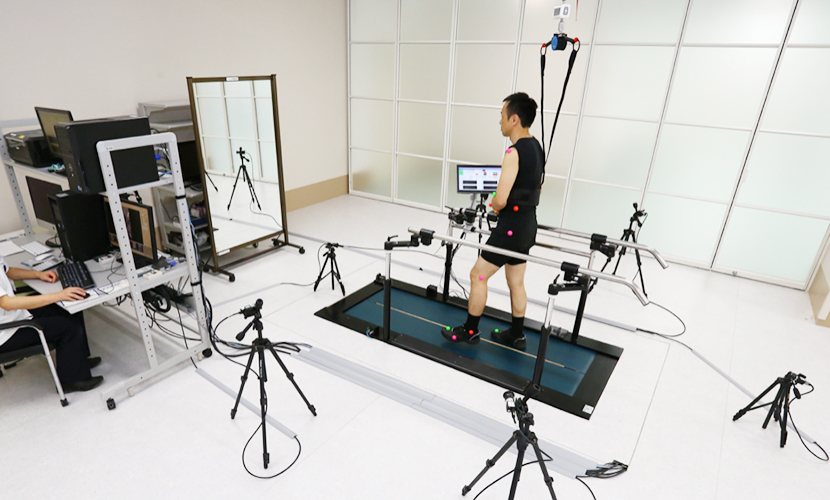Mobility is very important for all people. For independent daily life, one must be able to move, one of the main goals of which is the ability to walk. Walking is not only the easiest form of mobility that humans have, but it is also directly related to maintaining and improving one's health; therefore, we provide rehabilitation services to help as many people as possible to learn to walk.
We have developed many tools to assist people in walking. The RAPS-AFO®︎, developed jointly with the Tomei Brace Corporation, Aichi, Japan is a tool that supports the ankles of person with paralysis of the feet. Since it can be fine-tuned to fit the function of each patient, it is ideal for the rehabilitation of patients in the process of recovery and is used all over Japan. Welwalk®︎, developed jointly with Toyota Motor Corporation, Aichi, Japan, is a robotic system that assist walking exercise of people who have severe hemiparesis. The key is to "not help too much", so that the patient can always practice with maximum effort. It is expected to increase the possibility of acquiring an independent walking ability with a better gait pattern than the conventional walking exercise. It has been installed in more than 80 hospitals across Japan and won the Prize of the Ministry of Health, Labor and Welfare, the eighth Japan Robot Award. Joint researches with overseas institutions have also begun.
Even a patient with complete paraplegia can acquire practical level walking by wearing this robot on both legs after repeated walking exercises. Currently, the WPAL has been installed in several facilities in Japan for research purposes, contributing to the realization of the dream of paraplegics to walk again. As an example of the use of robots in real life, one paraplegic patient walked down the aisle wearing a WPAL at his wedding.
Fall prevention is an important issue. To establish effective balance practice with enjoyment, we developed a robotic system named Balance Exercise Assist Robot (BEAR®︎) with Toyota Motor Corporation, Aichi, Japan. It has been shown that it improves balance ability in patients with neurological diseases as well as in frail older people.
It is also important to properly evaluate whether a person is able to walk well. Until now, doctors and therapists have evaluated gait visually, but it has been difficult to evaluate multiple things simultaneously and to notice subtle differences. To solve this problem, we developed KinemaTracer®, a three-dimensional motion analysis system, in collaboration with the Kissei Comtec Co. By attaching color markers to the joints of the body and walking in front of multiple cameras, the system records and analyzes the body's inclination and joint angles to help determine the best program for walking practice. Currently, we are developing a marker-less analysis system.
We will continue our researches in order to bring about "freedom of movement" to as many people as possible.
Ankle foot orthosis RAPS-AFO®︎(with the Tomei Brace Corporation)
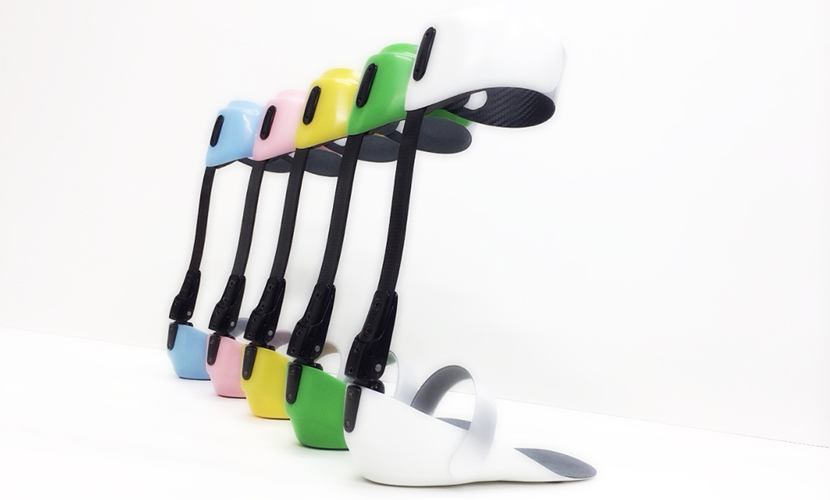
Robotic system for assisting walking exercise of people who have severe hemiparesis Welwalk®︎(with Toyota Motor Corporation)
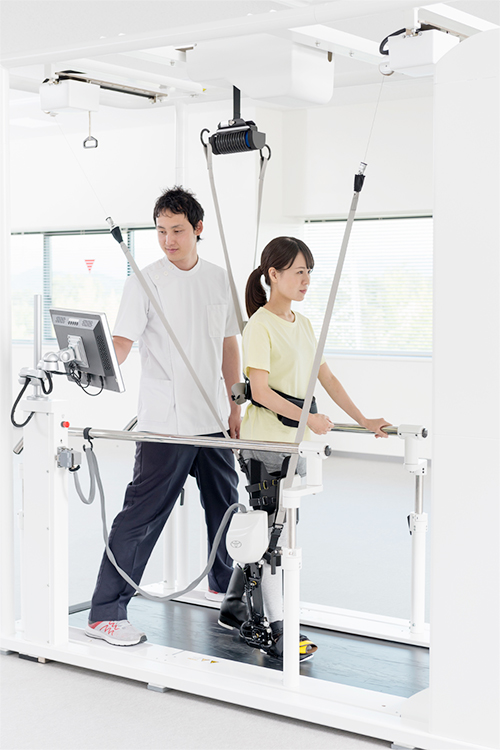
Robot for patients with severe spinal cord injuries WPAL®︎(with Aska Corporation and Tomei Brace Corporation)
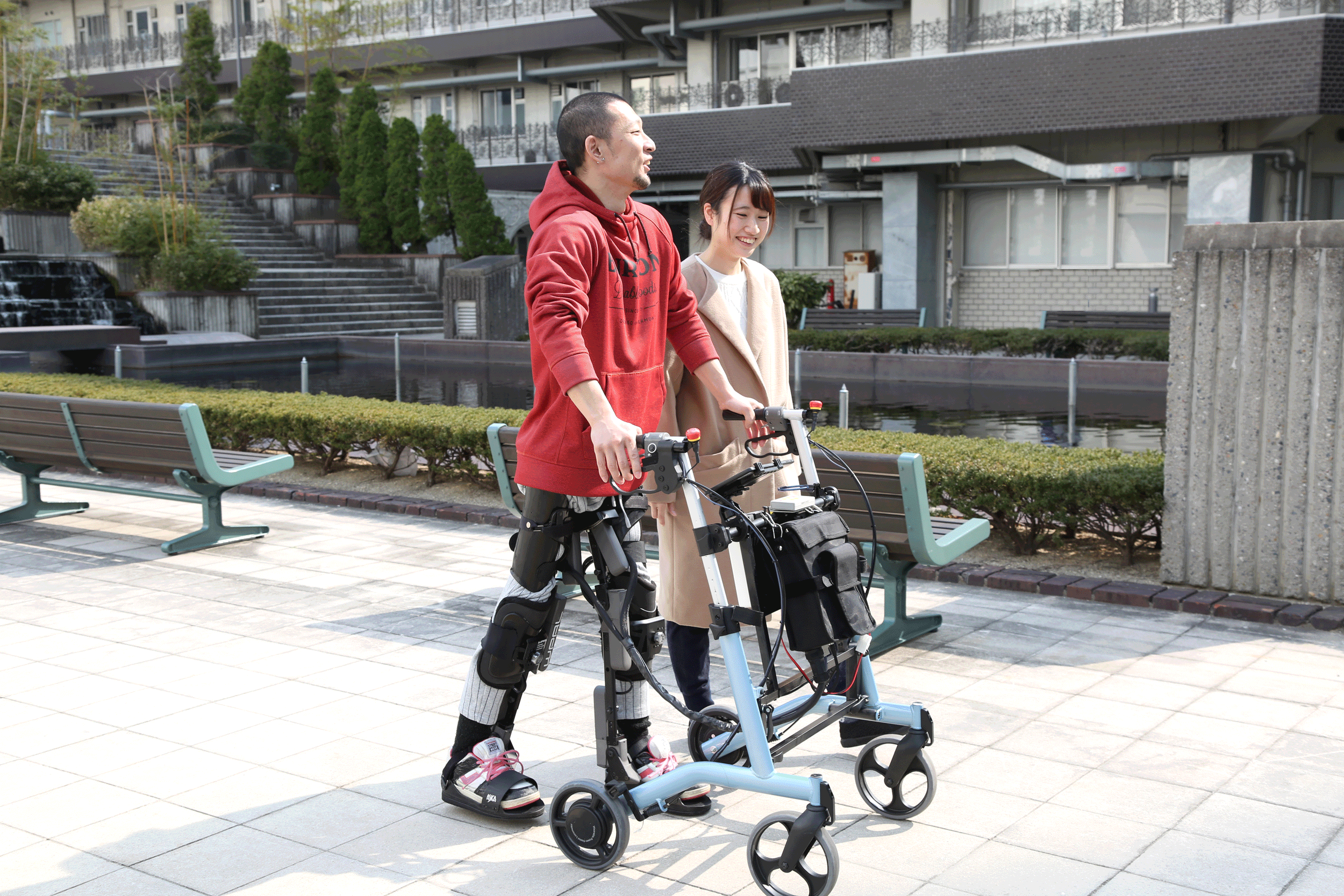
Balance Exercise Assist Robot BEAR®︎(with Toyota Motor Corporation)
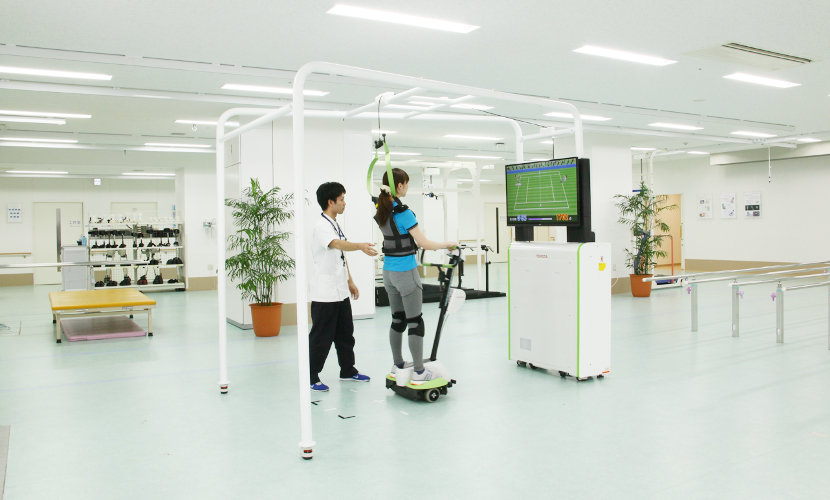
Three-dimensional motion analysis system KinemaTracer®(with Kissei Comtec Co)
